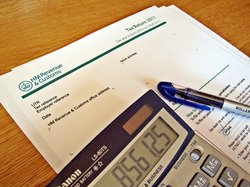|
Inheritance tax
It is common for unmarried couples to jointly own a property. Cohabiting couples with assets in excess of £650,000 may be subject to inheritance tax at 40% in the event of one of them passing away. This is as a result of each individual may have up to £325,000 worth of assets that can be transferred free of inheritance tax on their death to non-spouses - this is called the nil rate band. The above is not the case for married couples, as assets left to a spouse is exempt from inheritance tax and in addition the unused element of the nil rate band of £325,000 is transferred to the surviving spouse meaning the amount of £650,000 worth of the surviving partner’s death estate may not be liable to inheritance tax. Capital Gains Tax A key point is that married couples can transfer assets between each other without being subject to capital gains tax. As a result of this, married couples can transfer assets to each other freely to ensure that the capital gains annual exemption of £10,900 is fully utilised on the subsequent sale, for example on a rental property that is owned by one of the married couple prior to a sale of this property, half of the ownership can be transferred to the their spouse meaning upon sale of the property the married couple can fully utilise the capital gains exemption of £21,800. Other areas to consider Married couples allowance applies when one of the married couple was 65 before 6 April 2000 when the universal married couples allowance was withdrawn.
3 Comments
Don’t miss tax credits renewal deadline Individuals who were claiming tax credits for 2012-13 should be receiving a “Renewing your tax credits – Getting it right” pack.
It is vital that you complete the Annual Review form for the year ended 5 April 2013 and send it to the Tax Credits Office (TCO) Preston before 31 July 2013. Failure to do this will result in your tax credit payments being stopped and you may have to pay money back. Claimants should note:
There have been a few queries around how to correct errors made on an FPS, eg to correct an under reported amount of pay or deductions. HMRC’s guidance at http://www.hmrc.gov.uk/payerti/reporting/errors.htm#3 reflects HMRC's preferred way of reporting corrections.
An overriding rule is that if the correction necessitates an additional payment to the employee outside of the regular payroll cycle you must submit an additional FPS on or before the date of the additional payment. Eg if you pay an employee and report the pay on an FPS and the employee spots that he has been underpaid and you correct that by making an additional payment. If the employee was paid inside that regular payroll cycle, but the incorrect amount was reported on the FPS, because between submitting the FPS and paying the employee the amount payable changed (eg due to you receiving information confirming the hours worked were different to expectation) then the current HMRC guidance states that you can either:
However, some software defaults to submitting an amended FPS showing the recalculated pay for the period. Accordingly, HMRC have confirmed that their advice at: http://www.hmrc.gov.uk/softwaredevelopers/rti/errors-corrects-payroll.pdf still stands, that is, ‘our systems will cope with an FPS that states the total recalculated pay for the pay period rather than just the additional amount as long as the year to date figure is correct.’ RTI enabled software will follow one or other of these methods. The fundamental requirement is for the year to date figures for the latest RTI submission to be as accurate as possible. HMRC and DWP will use the most recent year to date values to update their systems. Source http://www.att.org.uk/technical/newsdesk/RTI_correction  This is a new HMRC Online system that will be introduced from April 2013. It will require employers to file their payroll details with HMRC every month/week before they are able to pay their staff. This means employers will no longer be able to give cash advances to staff which then later deduct from their wages. Currently employers only file a summary of this information once a year which has led to issues in recent years with individuals under or overpaying taxes due to incorrect tax codes. This new system will mean that the information held by HMRC should be up to date and hold accurate details of an individual’s earnings at any point during the year. HMRC claims that RTI will:
Payments and penalties Under the current system of annual filing HMRC are unable to tell if employers are paying the correct amounts of PAYE & National Insurance contributions throughout the year however the new monthly reporting system will enable them to check this. The penalty system was updated in 2010 in anticipation of the new RTI service and penalties will be imposed based on the number payment defaults on a percentage basis. The percentage penalties range from 1% for 2 to 4 defaults in the year to 4% for 10 or more. Employers paying 6 months late will incur a penalty of 5% with a further 5% charged if the payment is 12 months late. HMRC have said that they will issue warning letters for first and second defaults before penalties are issued so that employers are aware of the risk of incurring penalties. Payroll software Payroll software will need to be updated so that it can pass the information to HMRC. All payroll software developers will have accounted for this but you need to make sure you have got the necessary update. If you are not using payroll software you will need to use this going forward, however there is some free software provided by HMRC called Basic PAYE tools that is available for small employers. Alignment process There will be a payroll alignment process before each employer goes onto the RTI system so it is important to make sure you hold all the necessary employees details beforehand (name, address, National Insurance number and date of birth). Owner managed businesses We had been hoping there would be an exemption for owner manage businesses who currently only file an annual payroll return as they are paid below the limits for Income tax and National Insurance. As the deadline is fast approaching and nothing has been announced we have to assume that these businesses will now have to file a monthly payroll return under the new system. This is a big increase in form filling for small businesses when the government had pledged to reduce red tape for businesses. You may find this HMRC checklist useful http://www.hmrc.gov.uk/payerti/getting-started/business-readiness-checklist.pdf Tax return deadlines are 31 October for paper returns and 31 January for electronic returns following the end of the tax year to 5th April.  Pensions At first sight the Chancellor’s Autumn Statement did not contain much cheer, but things are not as bad as you might think. The restriction in pension tax relief caught the headlines, but has not yet been implemented. Although the pension annual allowance will fall to £40,000 as of 6th April 2014, there is still scope to use unused relief from previous years. Other non-contentious tax breaks are also still available for those who want to look for them. With just over three months to go to the end of the tax year, it’s time for people with income of more than £100,000, especially those paying the top tax rate of 50%, to consider how to reduce their tax liabilities. Accountants, Brighton, Hove, accountant  Choosing an accountant can be a daunting task which is why we have set out below some guidance to help you make the right decision for your business whether its a simple tax return or a prospering limited company/LLP Should I pick the cheapest? Unfortunately a number of accountants choose to compete on price rather than service, you want an accountant that will help your business grow not just compliance, see what services are being offered and always get fees agreed in advance. We are not the cheapest as we offer a 5* service to our clients however our fees are competitive. Will the most expensive accountant provide the best service? This is not the case in our experience, the larger firms tend to charge more than the smaller firms but the work is actually delegated to a junior member of staff, therefore you may find yourself paying a premium for a service which is not the best. Smaller firms (such as ourselves) offer a much more personal contact with a dedicated accountant which you can contact immediately who knows your business intimiately, all for a competitive fee, which can be paid monthly (in our case anway) Do I need a local accountant? Its helpful for meetings but not essential, the specialist service they provide is far more important, we look after clients in the surrounding area i.e Brighton, Hove, Portslade, Eastbourne, Shoreham etc however technology has enabled us to also look after clients all over the UK by liasing via telephone/email & skype etc What else should I consider?
Once you have found your accountant treat him/her with courtesy i.e don't ignore them or send them your figures at the last minute and also make sure their fees are paid on time, this will ensure a mutually beneficial working relationship If you would like us to provide a no obligation quotation or free consultation please don't hesitate to get in touch using the contact us link.  _The Self Assessment deadline is fast approaching for for the tax year ending 5th April 2012 and you need to make sure that you meet the following deadlines or you will receive a penalty from HMRC. Deadline for Paper Returns All paper returns must be received by HMRC by midnight on 31 October 2012. The only exception to this is if HMRC have written to you after 31 July 2012 asking you to make a self assessment return. Then you have three months after the date on your letter to submit the return. All self assessment notifications are usually sent out by HMRC during April. Deadline for Online Returns All online returns must reach HMRC by midnight on 31 January 2012. Again you will only have an extension on this date if HMRC write to you requesting a self assessment return after 31 October and you will have three months from the date on the letter to submit the return. If you want HMRC to collect any tax due through your tax code then you must submit your return before 30 December 2012. This is only an option if the tax owed is less than £3,000 Penalties Length of delay Penalty you will have to pay 1 day late A penalty of £100. This applies even if you have no tax to pay or have paid the tax you owe. 3 months late £10 for each following day - up to a 90 day maximum of £900. This is as well as the fixed penalty above. 6 months late £300 or 5% of the tax due, whichever is the higher. This is as well as the penalties above. 12 months late £300 or 5% of the tax due, whichever is the higher. In serious cases you may be asked to pay up to 100% of the tax due instead. These are as well as the penalties above.  _ A scheme which encouraged higher rate taxpayers to sort out their accounting at a reduced cost is set to end early next month. HM Revenue & Customs (HMRC) sent out more than 7,000 letters offering people who are yet to file their accounts or pay tax for 2009-10 the option of lower costs if they sorted out their affairs ASAP. They have until October 2 to respond, after which fines and charges will revert back to their normal levels. The tax authority has not confirmed what those who do come forward before the deadline will be charged but it has said that it will be significantly lower than the costs taxpayers will be hit by if HMRC has to track to them down. Marian Wilson, head of HMRC campaigns, said: “This campaign offers you a quick and straightforward way to bring your tax affairs up to date, but time is running out - you have until 2 October to submit your tax returns and pay the tax you owe.” If you need help with getting your tax affairs up to date or need an accountant in Brighton get in touch with us to see if we can help  Clients often ask about dividends issued to the owner of a limited company and what rate of tax such dividends attract. This article has been written to illustrate the tax implications of paying yourself dividends from your limited company without going into too much detail the postion is as follows Let’s take the example of a company director paying himself a dividend from his limited company of £18,000 and this is the only income he has earned during the tax year. The dividend issued by the Limited Company will be £18,000 and this will be the total sum received by the company director. However, the dividend certificate will state £18,000 dividend plus £2,000 dividend tax credit, giving total dividend income of £20,000. Here the dividend tax credit is simply a notional value and is not paid to the company director and will not be paid to HMRC. The company director will not pay income tax on the dividend he has received above of £18,000 and the amount that should be stated on his Self-Assessment Tax Return is £20,000. In effect the 10% tax credit cancels out the tax due on the dividend at 10%. In essence, if you are a basic rate tax payer (income up to £34,370 for the tax year 2012/13) then you will not pay any tax on dividends you issue to yourself from your limited company. If you are a higher rate tax payer then income tax will be due on the gross amount exceeding £34,370. (assuming a directors salary below or equal to the tax free allowance) |
AuthorLicenced Accountant in Brighton Archives
May 2020
Categories
All
|

 RSS Feed
RSS Feed
